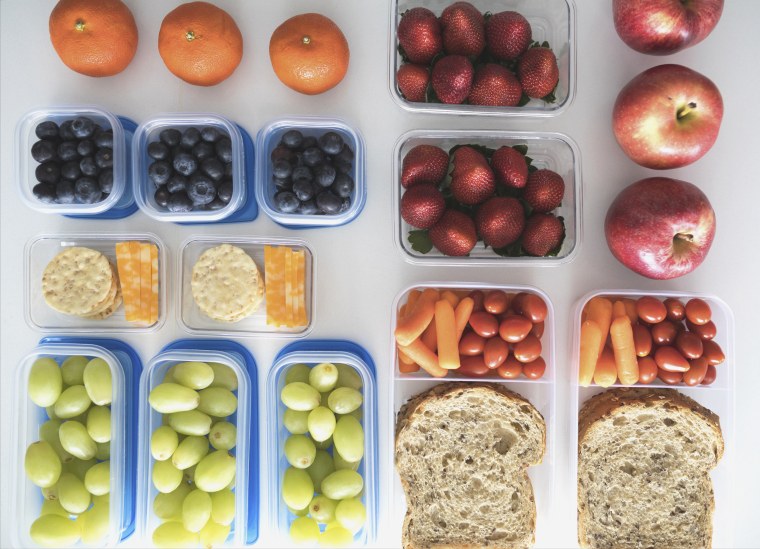
Avocados and other foods high in nutrients may help you to prevent diabetes. Whole grains are good sources of antioxidants, as well as being rich in fiber. You can reduce your chances of developing diabetes by choosing whole grains over refined grains. Refined flour can easily be replaced by whole grains when baking or cooking. Half whole wheat flour can be used in place of white flour for baking.
For a healthy snack, try some yogurt. You will find many health benefits to yogurt. It has high-quality protein and calcium. Unlike most sugary snacks, it contains only natural sugar. Greek yogurt is lactose-free so people with lactose intolerance will not have any problems. However, it is best to avoid regular brands since they are loaded with sugar. Greek yogurt and low-fat options are available.

A good snack choice is fruits and vegetables. Apples are one the best fruits and veggies to eat. They are rich sources of fiber and antioxidants. Research shows that the skin of an apple contains six times as much quercetin as its flesh. Seaweed and yogurt are high in fatty acid, which have been shown to lower the risk of developing type 2. Remember to drink lots of water. This is one the most important things that you can do to keep a healthy diet and prevent diseases.
Aside from fruit and vegetable, green leafy foods should be included in your diet. These vegetables are full of fiber, vitamin A, and calcium, and they are very low in calories. Green leafy vegetables can be eaten raw or cooked. For fewer calories, choose romaine lettuce and iceberg lettuce. They also make excellent additions to soups, stews, and stews.
Aside from fruits and vegetables there are other foods that may help to prevent diabetes. Almonds and spinach are two of the best foods to prevent diabetes. These foods are low-calorie and high in carbohydrates and rich in fiber and antioxidants. They can also regulate blood sugar levels. Apples can be dipped in almond butter, or added to oatmeal as a snack. This is one food that can help prevent diabetes. If you regularly drink coffee, your chances of developing type 2 diabetes are lower than those who don't.

Studies have shown citrus fruits to be associated with lower diabetes risk. Citrus fruits such as oranges, tangerines, lemons, and clementines are high in vitamin C, flavonoids, and soluble fiber. They have a lower Glycemic Index than other types of fruits. People with diabetes should limit grapefruit consumption. They may interact with certain medications, so be sure to consult with your doctor before choosing any specific fruit.
FAQ
Do cardio exercises work fast to help me lose weight?
Cardio exercises are great for burning calories, but they don't necessarily help you lose weight. It all depends upon how much fat you have stored, and what type or exercise you do.
If you're overweight, then cardio exercises may not be enough to burn off all those extra pounds.
It is important to combine them with exercise and diet.
Cardio exercises, such as running or jogging, can help you lose weight quickly. These activities burn more calories that any other form.
You must train resistance if your goal is to gain muscle instead of losing weight. Resistance training is done with no cost weights, machines, elastic bands, or other equipment.
To lose weight fast, you need to combine cardio exercises with resistance training.
A combination of cardio and resistance training will help you lose weight quickly.
How Much Exercise is Required to Lose Weight?
Many factors influence how much exercise is needed to lose weight, such as age, gender, body size, and weight. Most people need to exercise at least 30 minutes five days a weeks.
The American College of Sports Medicine recommends 150 mins of moderate-intensity aerobic exercise per week spread over three consecutive days.
For example, if you want to lose 10 pounds, aim to do 300 minutes of moderate-intensity exercise each week. You can do this by walking fast, swimming laps or biking, as well as playing tennis, golfing and hiking, or jogging, running or other similar activities.
Start out with 20 minutes of vigorous physical activity three times weekly if you're just getting started. That could include activities like lifting weights, sprints, jumping rope, or fast walking.
Aerobic exercise can also help you burn calories and increase muscle mass. Muscles can burn more calories that fat. You may be able to achieve your goal quicker by building muscle and losing fat.
How often do people fast regularly?
Most people who follow a ketogenic diet fast once per week. However, there are some who fast twice per week. Some others fast three days per week.
Each fast has a different length. Some people fast for 24 or 48 hours, while others go for 48.
Some people go on for more than 72 hours. But these extreme cases are very rare.
Statistics
- One 6-month study showed that simply doing 11 minutes of strength-based exercises 3 times per week resulted in a 7.4% increase in metabolic rate, on average. (healthline.com)
- It's estimated that half of all American adults attempt to lose weight every year (1Trusted (healthline.com)
- According to Harvard Health, it's estimated that a 155-pound (70-kg) person burns roughly 112 calories per 30 minutes of weight training (5). (healthline.com)
- Among women, the increase in metabolic rate was nearly 4%, or 50 more calories per day (14Trusted Source (healthline.com)
External Links
How To
How to Intermittent Fasting
Intermittent fasting, a type of dieting that allows you to only eat one time per week, generally Monday through Friday. This diet aims to lower your overall calorie intake, while still ensuring you get enough nutrition. It's believed that this helps burn fat faster than if you were eating normal meals throughout the entire week.
The most common form of IF involves restricting calories only on certain days of the week. This means that you might skip breakfast every day and then indulge in whatever food you desire throughout the day. You could also choose to eat three small meals daily rather than two large ones.
There are many different forms of intermittent fasting, including alternate day fasting, 5/2 fasts, 8/4 fasts, 16/8 fasts, etc. There are pros and cons to each type of intermittent fasting. Alternate day fasting, which doesn't require you to change your lifestyle, is the best way to get started. However, not everyone can stick to a rigid schedule. They might prefer to experiment with other methods.
If you want to try intermittent fasting, I suggest starting with alternate-day fasting. This will allow for gradual transition to more extreme fasting without having to change your lifestyle.